 NEWS: Southern strategy, now 50, is still churning politics
NEWS: Southern strategy, now 50, is still churning politics
COMMENTARY, Brack: Now is the time for national campaign on civics
SPOTLIGHT: S.C. Education Association
MY TURN, Buell: On choosing new voting systems for South Carolina
FEEDBACK: Letters on blockchain technology, dog “joke”
MYSTERY PHOTO: A mystery for the fall
S.C. ENCYCLOPEDIA: Harry Dent Jr.
NEWS: Southern strategy, now 50, is still churning politics

A news analysis by Andy Brack, editor and publisher | It has been 50 years since candidate Richard Nixon put into action a South Carolina adviser’s plan to prey upon fear and race to get white voters to cast ballots for the GOP.
 Devised as a “Southern strategy” by native son Harry Dent Sr., South Carolina political observers say the 1968 initiative is far from something in the history books. Rather, it’s alive and well, a continuing font of inspiration for Republican campaigners in an age where rage and race fuels tweets from the current president on down.
Devised as a “Southern strategy” by native son Harry Dent Sr., South Carolina political observers say the 1968 initiative is far from something in the history books. Rather, it’s alive and well, a continuing font of inspiration for Republican campaigners in an age where rage and race fuels tweets from the current president on down.
“[President Donald] Trump is not a GOP anomaly,” observed the Rev. Joseph Darby of Charleston. “He’s the next step in the evolution of a GOP that’s blown coded and subtle racial ‘dog whistles’ for 50 years – dog whistles that increased in volume with the rise of Sarah Palin to the national stage and with the advent of the Tea Party as a reaction to President Obama’s election.”
But it’s important to consider another impact of the Southern strategy. It didn’t just affect the Republican Party. Over the last 50 years, it made the Democratic Party harsher and shriller as its members attempted to respond in kind using the politics of economics instead of the politics of race. Democrats have tried, generally unsuccessfully in the South, to convince people to vote for then because the party’s programs and stances were in their economic interests.
Now in 2018, the Southern strategy has evolved into a national reality of everybody shouting at everyone else about everything.
Heading toward a Southern strategy
Longtime activist Brett Bursey of Columbia said South Carolina’s combination of race and politics has been around since the colony was founded 348 years ago as a business enterprise that quickly became based on slavery. By the time of American independence, slavery became enshrined in the Constitution.
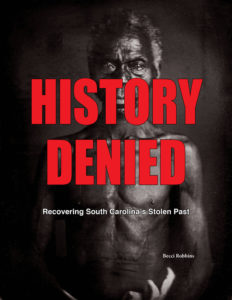 “The U.S. wouldn’t have been a slave nation in the beginning had it not been the delegation from South Carolina” at the constitutional convention, he said.
“The U.S. wouldn’t have been a slave nation in the beginning had it not been the delegation from South Carolina” at the constitutional convention, he said.
The economic importance of slavery in the Palmetto State is reflected in the 1860 census. The slave population outnumbered the free population in just two states: South Carolina (57.2 percent slaves) and Mississippi (55.1 percent).
Fast forward through the Civil War and Reconstruction, the end of which returned the white elite to power. They implemented Jim Crow laws for what became a legal way to keep the plantation culture alive through tenant farming. White supremacy thrived. Lynchings proliferated with more than 3,400 blacks and almost 1,300 white “extrajudicial killings” between 1882 and 1951, according to a Tuskegee University study cited in “History Denied,” a 2018 booklet by the S.C. Progressive Network.
In 1948, then Gov. Strom Thurmond of South Carolina ran for president as a Dixiecrat – a breakaway from ruling Democrats – on a platform to protect the rights of states to determine how to deal with racial segregation, then the law of the land in Southern states. Over the next generation, the nation struggled with race, culminating in the enactment of federal civil and voting rights protections in the mid-1960s.
An opportunity in 1968
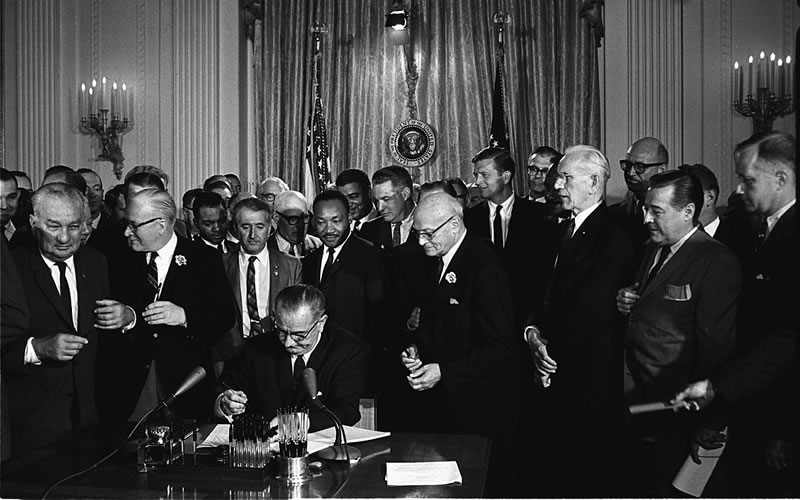
The national election of 1968 was the first in which millions of newly-enfranchised blacks became a real part of the electorate. Blacks were voting, going to integrated schools and starting to move into “white” neighborhoods. It was a big change for white Southerners. And it was an opportunity for the GOP.
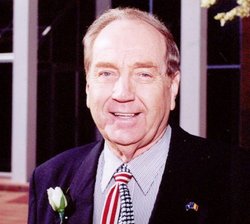
Dent, an adviser to Nixon, recognized how the political playing field was shifting and translated it for impact. He became a major architect of the Southern strategy, which successfully won white votes in the solid Democratic South by appealing to fears and prejudices of white Southern voters upset by changes caused by the Civil Rights Act of 1964 and the Voting Rights Act of 1965.
Dent, a St. Matthews native who had been on U.S. Sen. Strom Thurmond’s staff in the 1950s, served as the state’s Republican Party chairman from 1965 to 1968 before joining Nixon’s team. Dent’s 2007 obituary in The New York Times outlined the strategy that changed politics forever in the South:
“Its detractors call it racism cloaked in code words like ‘law and order.’ Its advocates call it a legitimate appeal to people left on the sidelines while other groups benefit from affirmative action and government aid programs. In any event, the strategy was credited with the Nixon victory.”
Historian Dan T. Carter, professor emeritus at the University of South Carolina, echoed the substance of the summary in a 2016 interview.
“The genius of Nixon was to come up with a way of talking about race without talking about race,” said Carter, author of “The Politics of Rage.” With the Southern strategy, Carter explained, “You find issues which profoundly resonate with underlying racial attitudes — welfare, busing and schools — and you focus on those in a way that invokes people’s racial fears without saying you’ve got to keep those black folks out of the schools or out of the neighborhoods.”
Advancing the Southern strategy
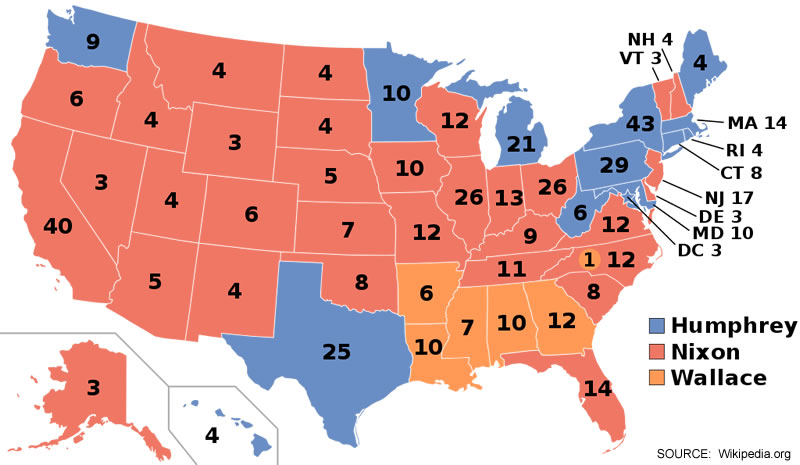
The strategy matured in South Carolina as another GOP political consultant named Lee Atwater helped hard-charging campaigns use race as a wedge to get more South Carolinians to back Republican candidates.

By 1981, Atwater, then 30, was working in President Ronald Reagan’s White House, fresh off of an aggressive campaign to re-elect Rep. Floyd Spence, R-S.C., who was challenged by Democratic attorney Tom Turnipseed.
Atwater, described by Bursey as “scary, scary smart,” was interviewed in 1981 on how Republicans were adapting the Southern strategy to win elections. A tape of the 42-minute interview came to light in The Nation magazine after the academic who interviewed him died. Said Atwater:
“You start out in 1954 by saying, ‘Nigger, nigger, nigger.’ By 1968 you can’t say “nigger”—that hurts you, backfires. So you say stuff like, uh, forced busing, states’ rights, and all that stuff, and you’re getting so abstract. Now, you’re talking about cutting taxes, and all these things you’re talking about are totally economic things and a byproduct of them is, blacks get hurt worse than whites.… ‘We want to cut this,’ is much more abstract than even the busing thing, uh, and a hell of a lot more abstract than ‘Nigger, nigger.’”
Nationalizing the Southern strategy

By the 2000s, the Southern strategy morphed into a divide-and-conquer approach to steer voters into the GOP.
“It’s the same thing, now,” said Columbia resident Judy Turnipseed who lived through the Atwater campaign days as her husband ran for Congress. “It’s the same kind of coded language that really speaks to people now like it did then.”
Darby said the Southern strategy is alive and well.
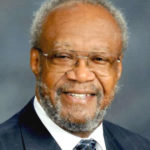
“I used to wish that South Carolina’ politics would be more like those in other states, but over time, national politics have become more like South Carolina’s politics,” he said. “Ours is now a ‘tribalized’ nation, with many in the GOP making political hay by stirring the racial fears and grievances of those who feel ‘put down’ by people of color and who worry that a ‘majority-minority’ electorate will exact vengeance for years of racial oppression.”
Then after the presidential election of Barack Obama in 2008 came the Tea Party, steeped in Southern strategy vitriol that ratcheted up everything a notch.
“The Tea Party was a precursor to what we now have,” Darby said. “They [tea partiers] made it hard for those in the [traditional] GOP — who stirred the poor, white masses with fear-based rhetoric so that they could quietly work to benefit the wealthy – to control the masses.”
By 2012 when The Nation’s Rick Perlstein wrote about Atwater’s 1981 interview, he cited use of the Southern strategy through “the use of race-baiting dog-whistles (lies about [Barack] Obama ending work requirements for welfare; “jokes” about his supposed Kenyan provenance) in the Romney presidential campaign.”
And who thrust Obama’s ancestry into the limelight? Trump, a president who mastered use of divisive language in 2016 to peel voters toward his America First messaging that was geared to inflame angry white Americans who have felt left out for too long.
The nastiness continues. Just last month, Trump called a former key White House staffer who is black a “dog,” a way to dehumanize her just as white authority figures literally dehumanize blacks in civil rights protests by turning dogs and water cannons on them. Meanwhile, the GOP nominee for governor in Florida last month used what some say was a slur to criticize his black Democratic opponent: “The last thing we need to do is monkey this up by trying to embrace a socialist agenda with huge tax increases and bankrupting the state,” he said.
Immigration is the new dog whistle

A Republican operative from South Carolina who asked not to be named is worried the nation is moving away from its core, founding principles.
“The fear factor today is being used in the battle over immigration reform,” the consultant said. “The nationalist populist movement led by Trump has been at the forefront.
“Yes, we need to need to fix our immigration policies but the majority of those affected are hard-working individuals doing jobs many native-born citizens apparently refuse to do in horticulture, agriculture, domestic service or other areas. Are there bad people who are also here illegally, absolutely. Just as there are bad people who also happen to be native born, and who are white and black.
“We need to enforce the laws but we need to be careful not to forget we are a nation of immigrants whose forefathers, just like many today, came here seeking a better life and a better opportunity to provide for their families.”
Immigration, the consultant said, really isn’t a state-based policy that state legislators can do anything about.
“Yet we allow that narrative to creep into races for the state house or even local office, solely for the purpose of creating fear, and motivating voters. It’s shameful and misleading.”
Moving forward
In the absence of alternatives, using the principles of the Southern strategy to divide will continue, many agree. How can we get beyond that?
“Better leaders who are not focused on getting specific agenda items accomplished [and] not merely being reelected,” one Republican said.

S.C. Rep. Jerry Govan, an Orangeburg Democrat who will lead the S.C. Legislative Black Caucus in January, says leaders in the state need to move away from the politics of fear and embrace a “values-driven politics” with people who stand up for truth, justice, fairness and respect.
“We miss out as a state by allowing a small but vocal core group from the extremes to drive the majority who make the decisions that impact the daily lives of those that count on us to do the right thing,” Govan said.
“We become paralyzed by our own fear of not being far enough to the right or left, which limits our ability to meet somewhere in the middle to solve the real problems of the socio-economic: wealth gaps, systemic poverty, health and educational disparities, to name a few.”
- Have a comment? Send to: feedback@statehousereport.com
BRACK: Now is the time for national campaign on civics
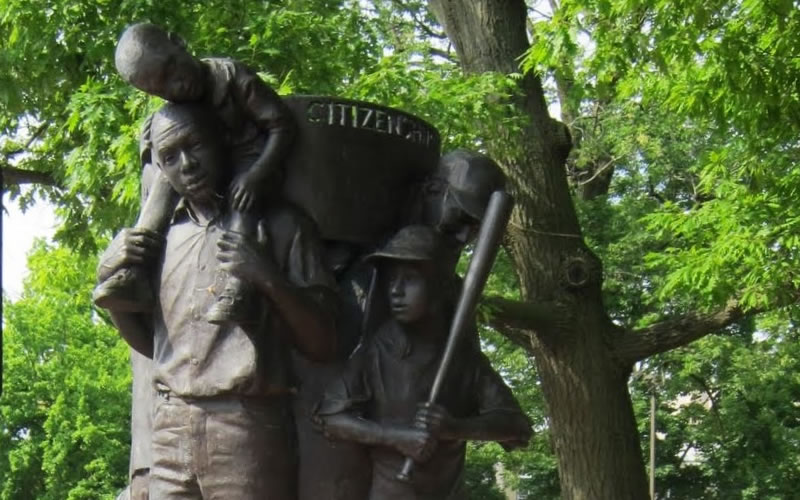
Commentary by Andy Brack, editor and publisher | Americans – liberal, conservative and in-between — need to be reminded of what it means to be American.
 For role models, they don’t need to look to just about anyone in Washington or state capitals like Columbia.
For role models, they don’t need to look to just about anyone in Washington or state capitals like Columbia.
All that seems to be coming from Washington is nonsense that spans from a presidential administration in constant crisis mode to a Congress that ping-pongs from outrage to shock to digging in their heels about things petty and consequential. And then there are the tell-all books and anonymous opinion columns that shine spotlights on all of the dysfunction.
In Columbia, there’s not nearly as bad of a mess, but a never-ending Statehouse corruption probe is putting the Energizer bunny to shame. On top of everything else, it’s again time to strap in for a sure-to-come menu of nasty political ads ahead of the November election.
Yuck.
We live in an age of impersonal bluster by electronic device. On the rise are communications that too often are boastful, disrespectful, scurrilous, haughty and malevolent. It’s as if what has become important is simply scoring a point for the current media cycle and salivating about what to do to win the next one.
This is not the kind of behavior that made America great. As Americans, we have long stood up for what’s right. We honored, died and acted upon values that fueled the Greatest Generation to defeat Nazism. We fought for a strong democratic system and institutions buttressed by the values of common good, the rule of law, hope, opportunity for all, and a host of freedoms enshrined in the Bill of Rights.
Unfortunately these days, the United States, long the shining vanguard of democracy that set the example for other countries, has become a creepy old uncle that other nations shy away from, too timid now to embrace. If it were not for America’s huge market for goods, longstanding allies would have jumped ship months ago, all thanks to the escalating rancor of Washington, D.C., that is trickling down to the grassroots of America.
But America is still better than the face it now shows the world. It’s time to return to our true roots of freedom and remember seemingly hidden values that millions still hold dear.
Our history suggests a path. Twenty-six presidential elections ago, Woodrow Wilson won re-election after campaigning against America entering World War I. But soon after he won in 1916, he realized America had a duty to participate. So he embarked on an all-out campaign to persuade Americans of the justness of the war’s cause. It worked.
Now, 101 years later, it is past time for editorials on the need for more civics education. Now is the time for real action, using all of the traditional and social media techniques never dreamed of by Wilson and his publicity machine. Now is the time for a bipartisan collaborative of corporate and civic leaders to fund a broad and deep effort to remind Americans about the times when our country’s leaders treated each other as people, not symbols and hashtags. Now is the time for a $50 million multimedia campaign to reteach common values of civics to Americans from sea to shining sea.
This group of principled leaders needs to use their deep pockets to fuel six months of infomercials and social media in early 2019 to restore people’s faith in democracy. They should showcase how democracy depends on freedom of the press and how it is not the enemy. They need to stress how investing in the common good strengthens all of us, not just the 1 percent. They need to highlight the strength of democratic institutions and the rule of law in protecting the weak from the strong. They need to describe the sanctity of the freedom to worship and, as Franklin Roosevelt once said, how Americans value being free from fear.
Now is the time to invest in our future by retelling the story of America and her democracy. Only by loudly and broadly proclaiming what we have stood for will Americans today be able to really listen to political candidates. So let’s share our neighborliness and decency in a broad-based campaign focusing on civics and values, not continue the surliness rooted in fake Americanisms.
- Have a comment? Send to: feedback@statehousereport.com.
SPOTLIGHT: The S.C. Education Association
 The public spiritedness of our underwriters allows us to bring Statehouse Report to you at no cost. This week’s spotlighted underwriter is The South Carolina Education Association(The SCEA), the professional association for educators in South Carolina. Educators from pre-K to 12th grade comprise The SCEA. The SCEA is the leading advocate for educational change in South Carolina. Educators in South Carolina look to The SCEA for assistance in every aspect of their professional life. From career planning as a student to retirement assessment as a career teacher, The SCEA offers assistance, guidance, and inspiration for educators.
The public spiritedness of our underwriters allows us to bring Statehouse Report to you at no cost. This week’s spotlighted underwriter is The South Carolina Education Association(The SCEA), the professional association for educators in South Carolina. Educators from pre-K to 12th grade comprise The SCEA. The SCEA is the leading advocate for educational change in South Carolina. Educators in South Carolina look to The SCEA for assistance in every aspect of their professional life. From career planning as a student to retirement assessment as a career teacher, The SCEA offers assistance, guidance, and inspiration for educators.
- Learn more: org
BUELL: On choosing new voting systems for South Carolina

By Duncan Buell, special to Statehouse Report | How can we be sure that we have a meaningful voice as citizens of our representative democracy?

At the most basic level, democracy is about voting. South Carolina’s State Elections Commission and our county commissions are working hard to ensure that South Carolina’s elections will be trouble-free and secure in November 2018. However, our current iVotronic voting computer systems are old and outdated. New systems must be in place by 2020, and that means getting to work soon to select and purchase secure and reliable technology to serve South Carolina in the coming years.
A range of voting equipment options now exists. The League of Women Voters of South Carolina encourages careful consideration of all systems in order to select a system that meets the standards of the national League for security, transparency, and auditability.
Most similar to the current equipment are “ballot marking devices” (BMDs), which are made by several manufacturers. These are normally touchscreen computers that present versions of the ballot to the voter, who makes her ballot selections with the touchscreen. In current systems, these choices are generally printed to a paper record. In most instances, the voter is presented with the physical paper record, is permitted to verify that the names chosen (or yes/no options chosen) are as she intended, and then the paper record is scanned for tabulation by an optical scanner.
These BMDs can be an improvement over the current paperless iVotronic voting computers used in South Carolina in that a paper record is generated so that a post-election audit is possible. However, most BMDs fail the transparency test. With most BMDs, the tallying is done not from the English text the voter sees of the choices made, but from a barcode that is supposed to encode those choices but whose values are not known to the voter. If one were to do a post-election statistical audit of the barcodes against the textual versions, one could verify that the barcodes were the same as the text, but even with this audit it would not be the case that the voter actually was able to verify her choices at the time of voting.
With at least one version of a BMD from a major manufacturer, the paper ballots go directly into a bin inside the BMD, and the tallying is done by the BMD. Although there is a paper record that the voter views, in this mode the BMD is really no different from an iVotronic with the paper trail mechanism attached.
Use of BMDs has not always gone smoothly. In some jurisdictions there has been controversy because not all the candidate names fit on one screen. In South Carolina, where candidates are always listed alphabetically, candidates with surnames toward the end of the alphabet might always appear on a second screen. In some jurisdictions, such as Nevada in the spring primary, the screens were configured incorrectly and some candidate names were never presented to the voters. Since the paper record listed only the choices made and not all possible choices, some voters never knew they had not been presented with all options. Nevada has recently admitted that it could not reliably determine who won an election in Clark County using their new BMDs and has been forced to call a special election.
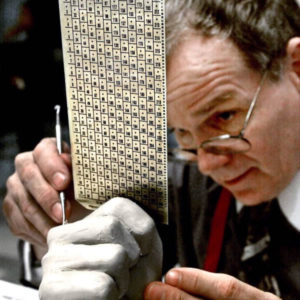
Ballot marking devices do have advantages: They can prevent overvoting (choosing too many candidates) or undervoting (choosing no candidates or too few candidates). They can be linked to audio or other output for accessibility. At their core, however, they are computers that must be configured for each election, running software that is not visible and producing outputs that cannot be trusted unless there is an independent way to audit the output (such as an audit of textual choices compared to the barcodes).
In sharp contrast to the BMDs, many jurisdictions are continuing to use or returning to the use of paper ballots marked by hand by the voter and scanned with optical scanners. This may seem low-tech, but the use of hand-marked paper eliminates nearly all the problems with BMDs.
With hand-marked paper, the voter sees the full ballot and marks her choices, either by filling in bubbles, or connecting an arrow pointing to a candidate’s name, or similar standard mechanism. Few voters will not have had experiences filling in such forms. The paper ballots are then scanned with optical scanners; in South Carolina this would take place in the precincts.
Hand marked paper has two major problems. First, there must be a secure chain of custody for the paper ballots themselves. In South Carolina, with precinct totaling, it would be difficult to corrupt an election by substituting an entire box of ballots between the precinct and county offices, because the precinct totals would not match. Nonetheless, the chain of custody is important.
Second, we are all familiar with the problem of badly marked forms. How do we count, for example, an “X” that isn’t a filled in bubble? Fortunately, scanning technology is very good and is improving, so this is less an issue than it might have been 20 years ago. More importantly, with a paper ballot, the paper itself can be viewed by humans and the choices adjudicated.
And finally, the use of hand-marked paper with optical scanners in the precincts means that the only unknowable technology used in the election process is the scanner technology that tabulates votes. There are no computers with unknown software. No touchscreens to go out of calibration. The only software is the scanning software itself, and that can readily be audited and verified by testing with known patterns of ballots.
Weighing these choices, hand-marked paper is the system that most closely conforms to national League of Women Voters standards. It is truly voter verifiable because the voter reads the same ballot markings that the scanner reads. However, when a system is chosen there is another very important criterion for evaluation of systems, cost. Our next article will address the relative costs of these systems, both in purchasing them and in maintaining them, using comparative data from states that have recently purchased new systems.
Duncan Buell, a member of the League of Women Voters of South Carolina, is NCR Professor of Computer Science and Engineering at the University of South Carolina.
- Have a comment? Send it to: feedback@statehousereport.com.
FEEDBACK
FEEDBACK: Letters on blockchain technology, dog “joke”
Blockchain verification uses a lot of electricity
To the editor:
![]() [RE: S.C. sits back as others bird-dog regulating emerging tech]: While it may become a useful technology for record-keeping, the current focus on blockchain is as a method of verifying crypto-currency transactions. As an incentive for computer owners such as Michael Bolick at Treis Mining to iteratively run calculations trying to hash the encrypted data, the data mining center that comes closest is rewarded with crypto-currency tokens.
[RE: S.C. sits back as others bird-dog regulating emerging tech]: While it may become a useful technology for record-keeping, the current focus on blockchain is as a method of verifying crypto-currency transactions. As an incentive for computer owners such as Michael Bolick at Treis Mining to iteratively run calculations trying to hash the encrypted data, the data mining center that comes closest is rewarded with crypto-currency tokens.
Since the total number of Bitcoins ever to exist is fixed at 21 million, the rewards become less over time, and the amount of computation to solve a block becomes greater. There are such mining centers all over the world involved in these computations, and there is no guarantee that any such mining data center will ever win a computation race.
Many governments are beginning to question whether this is an economically justified use of a public resource. Currently, the consumption of electricity for crypto-currency blockchain verification is almost as much as that used by Ireland.
If blockchain is ever to be useful for anything other than crypto-currency transaction validation, the cost will have to be competitive with other transaction systems, such as credit cards.
— Tom E. Stickler, Pawleys Island, S.C.
McMaster should apologize for dog “joke”
To the editor:
[Re: Democrats should lighten up, but GOP shouldn’t be tone-deaf]: Reject this or any other person who is offering voters fear-mongering in an effort to win at all costs, instead of moving South Carolina forward. If this vileness is permitted to stand, we will all be diminished.
The dogs are fictions of this person’s mind’s eye. There are no dogs, others, them or whatever imagery that gets conjured up in the scary night that this candidate advocates, intending to divide us, where there is no division among the people. Calling any group of people “dogs” is intended to evoke meanness and enmity among voters and end the discussion there.
Division on policy and opinion is what we should differ on and that is what should be on the table for consideration from all the candidates. No one is a dog. We can and should look for those who want to lead the state; not destroy the common good than binds us. Time to seriously,
[Gov. Henry] McMaster needs to apologize and get back to the people’s business. If you cannot, get out, as we deserve far better.
— Fred Palm, Edisto Island, S.C.
Send us your thoughts. We love hearing from our readers and encourage you to share your opinions. But you’ve got to provide us with contact information so we can verify your letters. Letters to the editor are published weekly. We reserve the right to edit for length and clarity. Comments are limited to 250 words or less. Please include your name and contact information.
- Send your letters or comments to: feedback@statehousereport.com
MYSTERY PHOTO: A mystery for the fall

Surely, there are lots of very tiny clues throughout this Mystery Photo. Where was this photo taken … and give us some context. Does it have any special meaning for you? Send your guess to: feedback@statehousereport.com. And don’t forget to include your name and the town in which you live.
Our previous Mystery Photo
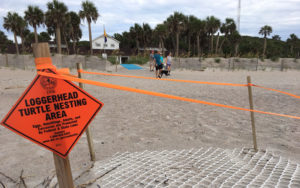 Our Aug. 31 mystery had a big clue at the left of the picture with a sign that said, “Loggerhead turtle area.” But which one? Folly Beach? St. Helena Island? Nope. It was, as a couple of sleuths figured out, the beach at Edisto Island State Park near a park building that overlooks the dunes..
Our Aug. 31 mystery had a big clue at the left of the picture with a sign that said, “Loggerhead turtle area.” But which one? Folly Beach? St. Helena Island? Nope. It was, as a couple of sleuths figured out, the beach at Edisto Island State Park near a park building that overlooks the dunes..
This was a hard one. Congratulations to this week’s two super sleuths: Philip Cromer of Beaufort and George Graf of Palmyra, Va.
Send us a mystery: If you have a photo that you believe will stump readers, send it along (but make sure to tell us what it is because it may stump us too!) Send to: feedback@statehousereport.com and mark it as a photo submission. Thanks.
S.C. ENCYCLOPEDIA
HISTORY: Harry Dent Sr.
S.C. Encyclopedia | Harry Shuler Dent Sr. was born in St. Matthews on February 21, 1930, the son of Hampton Dent and Sallie Prickett. An Eagle Scout and high school valedictorian, he graduated in 1951 from Presbyterian College with degrees in history and English. He married Betty Francis on August 16, 1951. They had four children.

Dent served as driver for Governor J. Strom Thurmond in his unsuccessful 1950 campaign for the U.S. Senate against the incumbent Olin D. Johnston. After army duty during the Korean War, Dent worked in Washington as a journalist before joining Thurmond’s Senate staff in 1955. Dent soon became his administration assistant (staff director) and political confidant. Enrolling in night school, Dent earned a law degree in 1958 from George Washington University and a master’s in law in 1959 from Georgetown Law School.
He was a major influence in Thurmond’s switch to the Republican Party in 1964 and in shaping what became the Republican “Southern strategy,” a racial appeal to the segregationist inclinations of southern whites. As a matter of principle, Dent worked to have the South recognized as an important part of the United States and not taken for granted. He served as state chairman of the Republican Party and had a key role in Richard Nixon’s successful presidential campaign in 1968. After the election, Dent joined the White House staff as counsel to the president. He returned to South Carolina in 1973, however, disillusioned by the deepening Watergate scandal.
Dent practiced law for several years while making the transition to a full-time commitment to an interdenominational lay ministry. He received a graduate certificate in Bible and mission in 1982 from Columbia Bible College (now Columbia International University) and spoke in more than one thousand churches. From 1982 to 1985 he served as the first director of the Billy Graham Lay Center in Asheville, North Carolina. He also visited seven countries as part of his lay ministry, concentrating on Romania, which he visited sixteen times. He helped establish a trade agreement between Romania and the United States, and he worked with Providence Hospital in Columbia to develop an exchange program with a hospital in Cluj-Napoca, Romania.
Dent authored five books. The Prodigal South Returns to Power (1978) is an inside account of national and southern politics during the 1960s and 1970s. Dent’s other writings include A Layman Looks through the Bible for God’s Will (1983), Cover-Up: The Watergate in All of Us (1986), Right vs. Wrong: Solutions to the American Nightmare (1992), and Teaching Jack and Jill Right vs. Wrong in the Homes and Schools (1996). [Dent died in 2007.]
– Excerpted from an entry by Jack Bass. To read more about this or 2,000 other entries about South Carolina, check out The South Carolina Encyclopedia by USC Press. (Information used by permission.).
ABOUT STATEHOUSE REPORT
Statehouse Report, founded in 2001 as a weekly legislative forecast that informs readers about what is going to happen in South Carolina politics and policy, is provided to you at no charge every Friday.
- Editor and publisher: Andy Brack, 843.670.3996
- Statehouse correspondent: Lindsay Street
More
- Mailing address: Send inquiries by mail to: P.O. Box 22261, Charleston, SC 29407
- Subscriptions are free:Click to subscribe.
- We hope you’ll keep receiving the great news and information from Statehouse Report, but if you need to unsubscribe, go to the bottom of the weekly email issue and follow the instructions.
- © 2018, Statehouse Report. All rights reserved.



Great issue! First one I have shared on FB – absolutely because of the “southern strategy” article. I also agree that it is long past time to teach civics in a non-partisan manner. Misinformation on social media and letters to the editor prove ignorance of basic governmental tenets and facts.
Thank you!